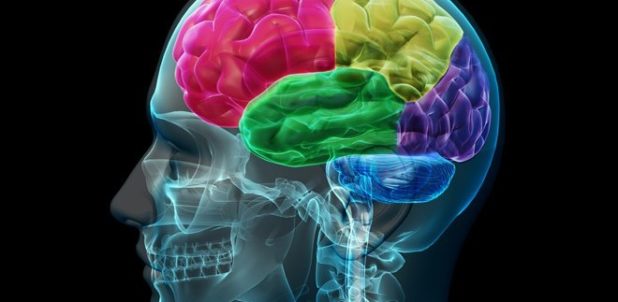Know Your Body Parts are the brain's main control of body functions
The brain is made up of specialized cells called neurons. These cells are the basic unit of the nervous system, sending and receiving messages through electrical pulses and chemical messages known as neurotransmitters.
Brain sections
The brain is one of the largest and most important organs of the human body, weighs about 3 pounds, and is covered with a protective membrane of three layers, the brain carries a wide range of responsibilities, from coordinating our movement to the management of our emotions, the brain consists of three main sections: , And the back of the brain.
Introduction to the brain
The frontal brain is the most complex part of the three parts, because it gives the ability to "feel", learn, remember, and consists of two parts: the end brain and the chromosome.
2. Central brain
The brain is the upper part of the frontal brain. This area of the brain sends and receives information. Data from the senses, such as the eyes and ears, are sent to the area and then to the frontal brain.
3. The back of the brain
The back of the brain forms the lower part of the brain stem and consists of three units. The first unit controls the involuntary functions such as digestion and breathing. The second unit helps control the functions of the body. The third unit is responsible for coordinating the movement.
The brain is the center of control in the body, where your brain represents the main control method in the body by sending messages to all members of the body.
Know Your Body Parts are the brain's main control of body functions
The brain is made up of specialized cells called neurons. These cells are the basic unit of the nervous system, sending and receiving messages through electrical pulses and chemical messages known as neurotransmitters.
Brain sections
The brain is one of the largest and most important organs of the human body, weighs about 3 pounds, and is covered with a protective membrane of three layers, the brain carries a wide range of responsibilities, from coordinating our movement to the management of our emotions, the brain consists of three main sections: , And the back of the brain.
Introduction to the brain
The frontal brain is the most complex part of the three parts, because it gives the ability to "feel", learn, remember, and consists of two parts: the end brain and the chromosome.
2. Central brain
The brain is the upper part of the frontal brain. This area of the brain sends and receives information. Data from the senses, such as the eyes and ears, are sent to the area and then to the frontal brain.
3. The back of the brain
The back of the brain forms the lower part of the brain stem and consists of three units. The first unit controls the involuntary functions such as digestion and breathing. The second unit helps control the functions of the body. The third unit is responsible for coordinating the movement.
The brain is the center of control in the body, where your brain represents the main control method in the body by sending messages to all members of the body.
Know Your Body Parts are the brain's main control of body functions
The brain is made up of specialized cells called neurons. These cells are the basic unit of the nervous system, sending and receiving messages through electrical pulses and chemical messages known as neurotransmitters.
Brain sections
The brain is one of the largest and most important organs of the human body, weighs about 3 pounds, and is covered with a protective membrane of three layers, the brain carries a wide range of responsibilities, from coordinating our movement to the management of our emotions, the brain consists of three main sections: , And the back of the brain.
Introduction to the brain
The frontal brain is the most complex part of the three parts, because it gives the ability to "feel", learn, remember, and consists of two parts: the end brain and the chromosome.
2. Central brain
The brain is the upper part of the frontal brain. This area of the brain sends and receives information. Data from the senses, such as the eyes and ears, are sent to the area and then to the frontal brain.
3. The back of the brain
The back of the brain forms the lower part of the brain stem and consists of three units. The first unit controls the involuntary functions such as digestion and breathing. The second unit helps control the functions of the body. The third unit is responsible for coordinating the movement.
The brain is the center of control in the body, where your brain represents the main control method in the body by sending messages to all members of the body.





No comments:
Post a Comment